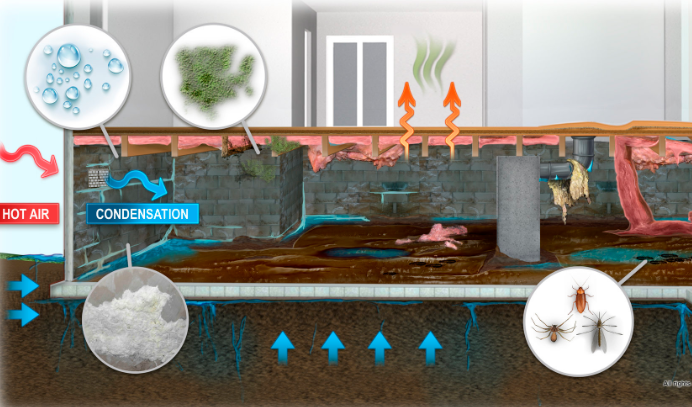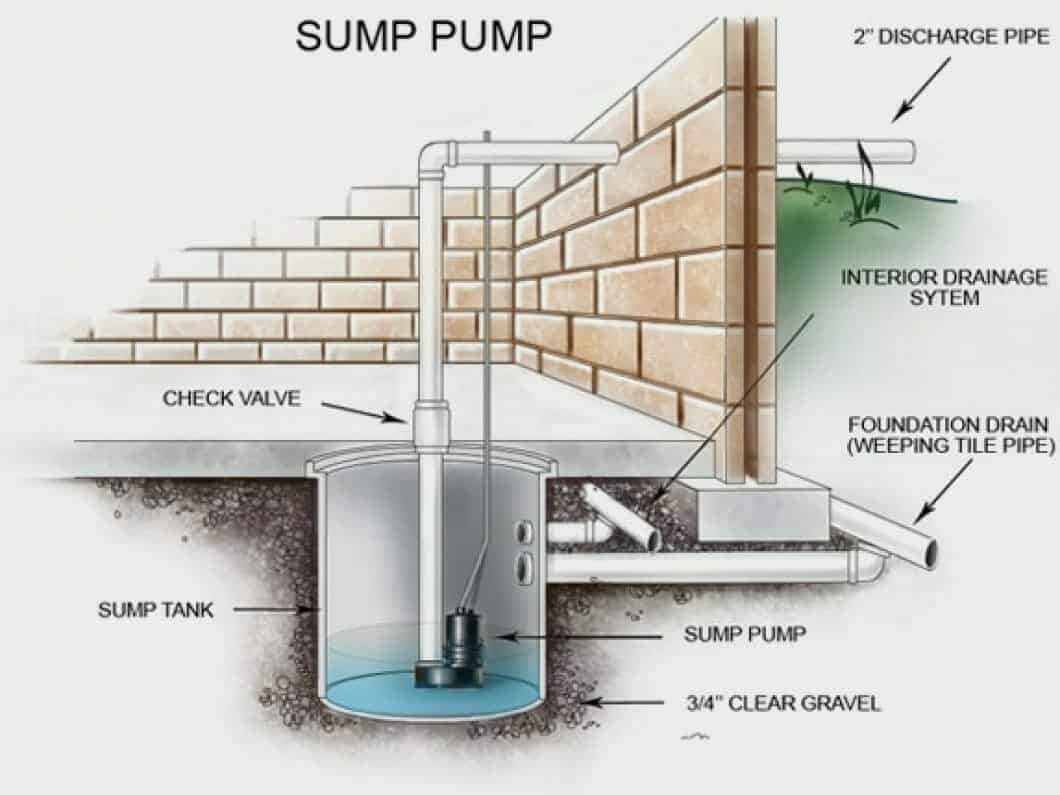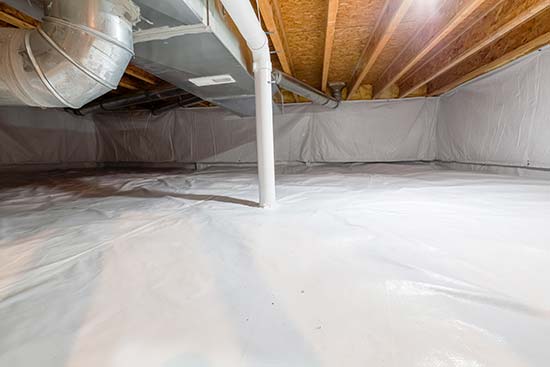Are you dealing with a flooded crawl space and need a quick and reliable solution? Or is your crawl space damp, and you want to know what’s causing it? Whether you’re dealing with a small or large problem, this guide will provide you with helpful tips and strategies that you can use to fix water problems in the crawl space properly. We’ll cover everything from identifying the source of your issue to creating an effective repair plan. Let’s get started.
Water Source Identification
Before attempting to fix the water problem in your crawl space, you must first identify where it is coming from. This can be easier said than done because, many times, the water source can be hard to find. The most common sources of water intrusion in the crawl space are roof leaks, leaking pipes, and groundwater.
Roof leaks can be identified by examining the roof and attic to determine any evidence of water damage or crawl space moisture. If you have access to your crawl space, you should also look for signs of water entering from above, such as wet spots, mold, or mildew.
Leaking pipes and groundwater can be more difficult to identify since they are often hidden from view. Look for signs of standing water or dampness in the crawl space and check around any exposed pipes for evidence of leaking. Sometimes, you may need to hire a professional plumber to inspect your pipes and diagnose the problem in the wet crawl space.
Below-Grade Water Sources
For most homes, the below-grade sources of water entering or collecting in a crawl space can usually be identified and solved with the right combination of techniques. Some common sources include:
- Poorly Designed Grading Or Drainage: Improper landscaping can cause surface waters to run toward your home instead of away from it. Solutions can be regarding the slope around your home and installing proper drainage systems like gutters and downspouts.
- Poorly Installed Or Blocked Footer Drains: Footer drains are perforated pipes located along the foundation of a house designed to direct water away from the foundation. If these pipes become clogged, cracked, or otherwise damaged, they can cause water to enter the crawl space. Ensure proper installation and maintenance of footer drains and install a sump pump if necessary.
- Leaks From Plumbing, HVAC Systems, Or Appliances: If your home has any pipes, tanks, or other components located in the crawl space that are connected to the sewer or water system, they may be leaking. Solutions include checking for and repairing any leaks in these components and installing a sump pump if necessary.
- High Water Table: In certain parts of the country, the water table can become very high during heavy rain seasons. This can cause standing puddles in the crawlspace’s lowest parts. You can try installing a sump pump system and encapsulating the crawl space with a vapor barrier to reduce humidity levels and prevent moisture from entering.
Above-Grade Water Sources
It is likely an above-grade source if standing water or a few puddles in your crawl space are unrelated to season changes or weather patterns. It can be a leaky pipe, a persistent drip from plumbing fixtures, or even something as simple as an overflowing bathtub that was forgotten about and left running for too long. Also, a roof leak can cause a lot of damage in the crawl space, so it’s important to check for signs of water damage as soon as you notice any puddling or pooling water.
If the standing or puddling water is found directly below a tub, shower, toilet, or other plumbing fixture, you are likely dealing with a plumbing-related water problem. In this case, it’s best to hire a professional plumber to diagnose and fix the issue.
Interior Water Issues
When water enters through the walls or foundation of a home, it can be a much more serious problem. This is usually caused by high water tables nearby, blocked downspouts and gutters, or poor drainage around the structure. Also, water can seep through cracks and leaks in the foundation walls. This water problem needs to be addressed quickly as it can cause serious damage to the structure, mold growth, and other health hazards.
Also, if a crawl space is filled with water, it can cause significant damage to the foundation of your home. Identifying the source of the problem and repairing it quickly is essential. There may be a need to install sump pumps and drains, repair or replace gutters and downspouts, or apply waterproof sealants to the walls of the crawl space.

How To Control Water In Crawl Space
After identifying the source of the water, you’ll need to take steps to control it. It will involve a few different steps, depending on the particular situation. The steps include:
1. Gather The Tools And Materials
First, you’ll need to gather the necessary tools and materials. You’ll typically need a shovel, tape measure, wood stakes, twine, flashlight, bagged drainage rock, sheet plastic or kraft paper rolls, flexible perforated drain pipe, plastic vapor barrier, GFCI outlet, and sump pump. Also, if you’re dealing with standing water, you’ll likely need a wet or dry vac for dry crawl space.
2. Excavate The Crawl Space
Next, you’ll need to excavate the crawl space. This will allow you to identify the water’s source better and ensure that it’s properly dealt with. You’ll want to do this carefully, and it’s best to work with a professional so as not to cause any damage.
Remove the vapor barrier and any other objects that may be in the way. Also, remove any debris and vegetation from the area. You may also need to do a bit of grading around the perimeter.
3. Dig The Trench
Once excavating the crawl space, you’ll need to dig a trench around the perimeter. This should be 8-12 inches deep and wide enough for your drain pipe. You’ll also want to ensure the trench is slightly sloped away from the house, so that water in the drain pipe will flow out of it. Depending on your specific soil conditions, you may need to line the trench with gravel or sand for added drainage support.
4. Lay The Drain Pipe
Next, you’ll need to lay the perforated drain pipe in the trench. This should be done carefully and without forcing or stretching, as this could damage the pipe. The perforations are designed to collect water and direct it downhill, where the sump pump will do its work. You can secure the pipe using stakes, but don’t drive them all the way in, as this could puncture the pipe.
5. Fill With Gravel
Once you’ve laid the pipe, fill it with gravel to help move the water along and keep it away from the walls of your crawl space. It’s best to use a bagged drainage rock to provide the most effective drainage. Spread the remaining surrounding soil over the area, and make sure to even out the surface.
6. Install A GFCI Outlet
With help from a professional, you’ll need to install a GFCI outlet for the sump pump. Be sure to locate it in an area away from standing water and out of reach of children. It should be wired directly into your home’s electric system and include a ground fault circuit interrupter (GFCI) and a circuit breaker.
7. Install The Sump Pump
Once the GFCI outlet is in place, you’ll need to install your sump pump. Be sure to use a pump rated for outdoor use that can handle at least twice the amount of water expected in your crawl space. Place it on top of an airtight plastic basin, which will catch and redirect the water. Also, make sure to use a grounded 3-prong plug for additional safety.

8. Install A Discharge Pipe
To finish the job, you’ll need to install a discharge pipe and prevent future flooding. This will direct the water away from your home’s foundation and should run 10 feet away from the property line. Make sure to use a flexible pipe to make turns without any kinks or bends easily.
9. Cover With A Vapor Barrier
You’ll need to cover the entire area with a plastic vapor barrier. This will help prevent water from seeping through the walls and crawl space floor into your home’s interior spaces. Be sure to overlap the pieces of plastic by at least a foot and seal any seams with duct tape. Also, use a utility knife to trim any excess plastic. Do follow our crawl space encapsulation guide.
10. Final Touches
Finally, you’ll need to add the finishing touches to your newly waterproofed crawl space. Install wood stakes around the perimeter and secure them with twine. Attach a flashlight or other light source nearby for easy access in the future. And lastly, make sure to check the sump pump regularly to ensure it’s working properly.
With these simple steps, you can confidently tackle any water problems in your crawl space. Make sure to take all necessary precautions when dealing with electricity, and always hire a professional electrician if you’re unsure how to proceed. With the right tools, materials, and knowledge, you can fix water problems in your crawl space quickly and efficiently.

Safety Considerations
Several potential hazards exist when working in the crawl space. You will want to take the necessary precautions to minimize all potential dangers.
- Contaminants: To reduce airborne contaminants, ensure the crawl space is well-ventilated with outside air. There may be dust, dried animal droppings, black mold, and asbestos in the air. Be sure to wear a respirator or protective mask when working in this area. Also, breathing protection is necessary for any activities involving drywall, cement, or other materials containing asbestos.
- Sharp Objects: Many sharp objects may be present in the crawl space, from nails, utility knife blades, glass shards, and metal pieces discarded by builders over time. Wear heavy gloves as well as knee pads and long-sleeved shirts or coats.
- Electricity: A power source may be present in the crawl space from outlets, junction boxes, and lighting fixtures. Before beginning work, turn off the main power supply for safety reasons. Be sure to wear rubber-soled shoes to help protect against electrical shock.
- Animals: Animals like rodents or snakes might live in the crawl space. Contact a wildlife control specialist to ensure the area is secured, and any animals are safely removed.
When undertaking a project in the crawl spaces, it’s critical to take all necessary safety precautions. Being aware of the potential hazards and preparing accordingly will help you successfully complete your task without injury or damage to your home.
Conclusion
Following the guide will help to minimize your crawl space water problems and promote a healthy living environment. However, if the problem persists after implementing these methods, it’s time to get professional help. A qualified contractor can diagnose the cause of your crawl space flooding and find ways to reduce or prevent it from happening again. With their specialized experience and knowledge, they can give you peace of mind knowing that your crawl space is safe and dry.


